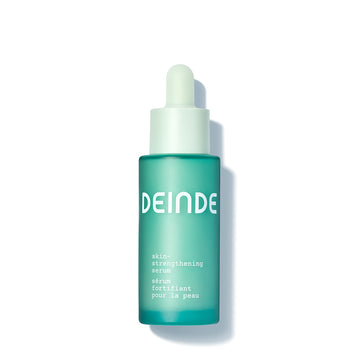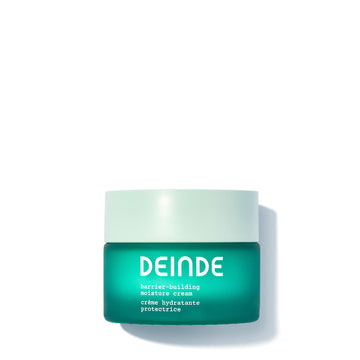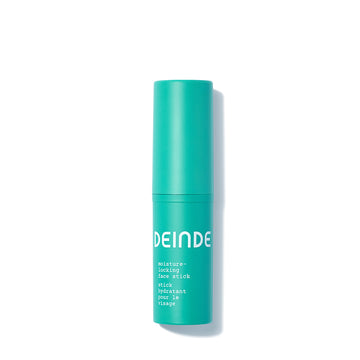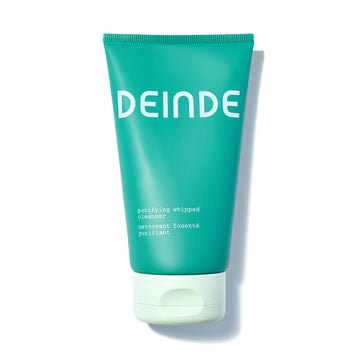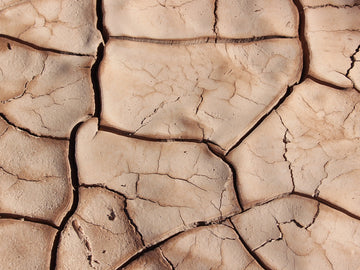
What Is Skin Purging and How Do You Know If It’s Happening?
There’s an undeniable, lowkey excitement that comes along with trying new skincare products and seeing what works. On the other side of any skincare routine transition—we always imagine—is radiant, glowy skin for decades and decades to come. However, we also all know that change can be difficult. And sometimes change is not that pretty. Such is the case for skin purging.
When you begin to integrate new products into your skincare regimen, you may experience a detox response in your skin that’ll make you think that everything you’re trying to do to help your skin is a failed attempt.
Before you go to the dark side, worried that you can never try new products again, know that purging is super common and can happen during the transitional stage between new products, new active ingredients, or new routines. Even skincare experts can be thrown off by the onset of skin purging, leaving them feeling puzzled and disheartened by this process.
We’re going to give you the lowdown on what skin purging is, what it looks like, and what to do if you are experiencing it. Most of all, we are here to say, “Don’t panic!” as skin purging is quite normal. It’s all a part of the process.
What is skin purging?
We’re not going to lie to you: the name isn’t pretty. But skin purging is not as bad as the name evokes. Still, though, skin purging is definitely not ideal. Skin purging is the process by which your skin is turning over cells—but on overdrive. This accelerated cellular turnover means an increased rate by which your skin barrier is shedding dead skin cell buildup and unclogging pores.
You can think of skin purging as a fast and thorough spring cleaning process that your skin feels triggered to do. Oftentimes, skin purging is triggered by intentional (and intensive) skincare treatments, or by skincare products that lack a certain level of gentleness.
Purging skin sounds alarming, we know. But it’s important to recognize that skin purging is a natural process, especially when your skin is adjusting to new ingredients—like retinol, salicylic acid, or benzoyl peroxide—or skincare regimens. Your skin is always shedding dead cells—but when you are skin purging, everything is moving at a much faster rate.
What makes skin purging happen?
What was it that Newton said? For every skincare action, there is an equal and opposite skin reaction? Skin purging can be invoked by certain skincare products that aim to accelerate skin cell turnover. You might find ingredients like retinoids, alpha hydroxy acids (AHAs ), beta hydroxy acids (BHAs), and vitamin C can increase your skin turnover rate and therefore lead to skin purging.
You might also notice that those ingredients are generally accepted as common players in everyday skincare regimens. It’s not that these ingredients are bad—look at Vitamin C! Who can knock a glass of orange juice?!—it’s that your skin must become accustomed to their accelerating, exfoliating properties.
Safe ingredients in many skincare products are meant to incite this type of exfoliation, which can initially exacerbate underlying congestion in the skin before revealing clearer, healthier skin.
Even gentle ingredients can lead to an unexpected response in your skin. For example, DEINDE’s skin-strengthening serum contains niacinamide, to which some people may be sensitive (and not even know it). If you haven’t used a product that contains niacinamide before, you might experience some skin purging when you first start to use it. We recommend patch testing on the inside of your wrist and waiting 24 hours before applying to your face to be safe.
This is all to say—skin purging is not anyone’s favorite experience, but it is a common effect of productive skincare regimens.
Skin purging can be triggered by non-skincare related stimuli too. You may have experienced lifestyle changes like starting a new exercise routine or making dietary adjustments have also led to skin purging.
You can even think of increased sweating as a form of exfoliation, which might temporarily exacerbate acne or skin congestion and lead to skin purging. Nutrition can have a great impact on skin purging. Dietary changes that affect hormone levels, especially, can influence skin health and potentially trigger purging.
Is my skin purging?!
Maybe! But that’s OK. What’s most important when it comes to skin purging is to differentiate between normal skin purging and adverse skin responses, such as irritation, allergies, or rashes.
Skin purging typically manifests as an increase in breakouts or congestion in areas where you would commonly experience acne or clogged pores. (You know the spots). If you notice an increase in acne breakouts, whiteheads, blackheads, or pimples in these well-charted areas, it is very possible that you are merely experiencing skin purging.
Of course, since skin purging can take place when you get used to a new skincare regimen, keep track of the products you are using on your skin. If you’ve recently tried a new product, your skin may be accelerating its cell turnover and going through skin purging.
On the other hand, allergic reactions, itching, burning, redness, and swelling should be tended to immediately. If you are noticing adverse reactions in areas where you wouldn’t normally experience breakouts, you may be dealing with something other than skin purging.
If you experience these types of symptoms, you want to stop using the skincare product you are using and consult a board-certified dermatologist or a licensed medical professional. As always, if you have any concerns or if your skin runs extra sensitive, consider patch testing on your wrist and waiting 24 hours before applying a new product.
How can I better manage skin purging?
Skin purging is no picnic. But this too shall pass, and on the other side is more radiant, clear, and blemish-free skin. There are many things you can do to ensure your skin gets through the skin purging period without too much turmoil.
Try new products gradually
Since skin purging can be invoked when you try out new skincare products, it is important to not try too much at once. When incorporating potent skincare ingredients into your routine, start with lower concentrations or frequencies to allow your skin to acclimate gradually over time. This approach can help minimize the intensity and duration of purging. If you try on too many new products at once, you might not have a good sense of which products are doing what, and your skin might become overwhelmed.
Keep up on hydration and moisturization
Even while your skin is purging, it’s important to keep up on the essentials: cleansing, treating, and moisturizing. Since skin purging is, in effect, a form of exfoliation, you want to ensure that your skin is cleansed and moisturized to endure the cell turnover. Hydrated skin tends to be more resilient and better equipped to withstand the effects of purging.
Sun protection. Sun protection. Sun protection
When your skin is purging, you may experience some increased sun sensitivity. (Think of all those brand new skin cells making their big debut on the top of your skin. Don’t scare them away!). Protect your skin from harmful UV rays by wearing a broad spectrum sunscreen daily. Sunscreen not only prevents sun damage but it also helps your skin to heal over time. That is important as your cells turnover during the process of skin purging.
Practice that “patience is a virtue” mantra
Skin purging is a transient experience (aka a phase), and it typically subsides within a few weeks. That means, don’t panic. Try to stay patient as your skin gets used to the new product and endures the standard cell turnover. Try to resist the urge to abandon products prematurely. Instead, maintain consistency as much as you can. Remember, the battle against inflammaging is a marathon, not a sprint!
Loop in a pro
As with anything in skin care, if you are concerned that your skin purging has reached an unmanageable level, or worried that you may be experiencing an adverse response, always consult a professional dermatologist or skincare expert. Given that skin purging is common, a professional should be able to help you navigate your specific concerns.
So that’s the 411 on skin purging! Although skin purging is often misunderstood, it is a natural experience, and there’s something beautiful on the other side.
By understanding the causes of skin purging and the progression of it, you can better refine your overall skincare regimen. Effective management of skin purging can help you navigate it with confidence. Trust us: if you’re using science-backed, efficacious skincare products, there’s usually a radiant light at the end of the breakout tunnel.
Sources:
Dual Effects of Alpha-Hydroxy Acids on the Skin | PMC
Applications of hydroxy acids: classification, mechanisms, and photoactivity | PMC
Epidermis and Its Renewal by Stem Cells - Molecular Biology of the Cell | NCBI Bookshelf
Epidermal turnover time | NCBI
